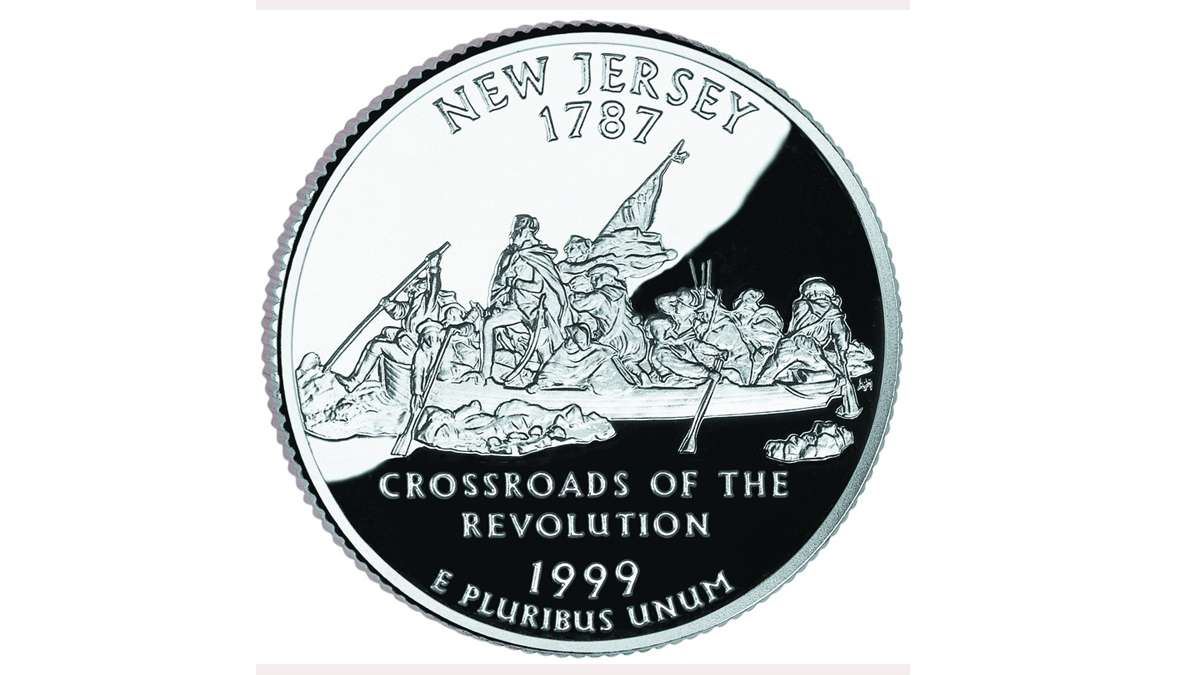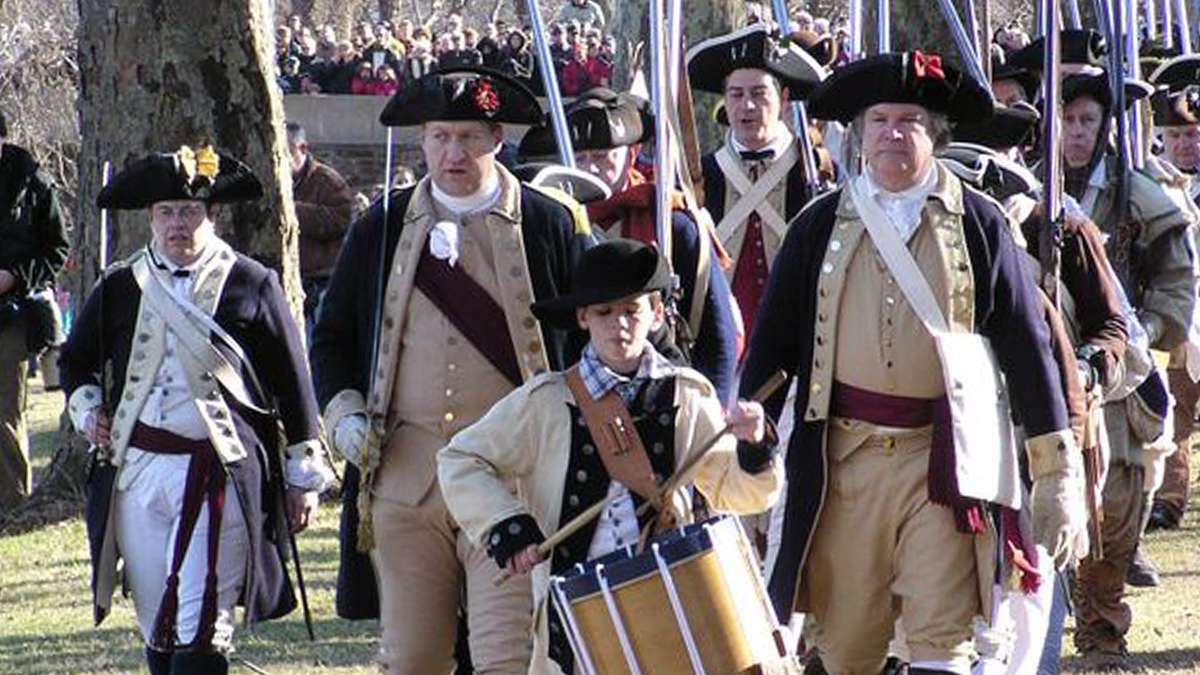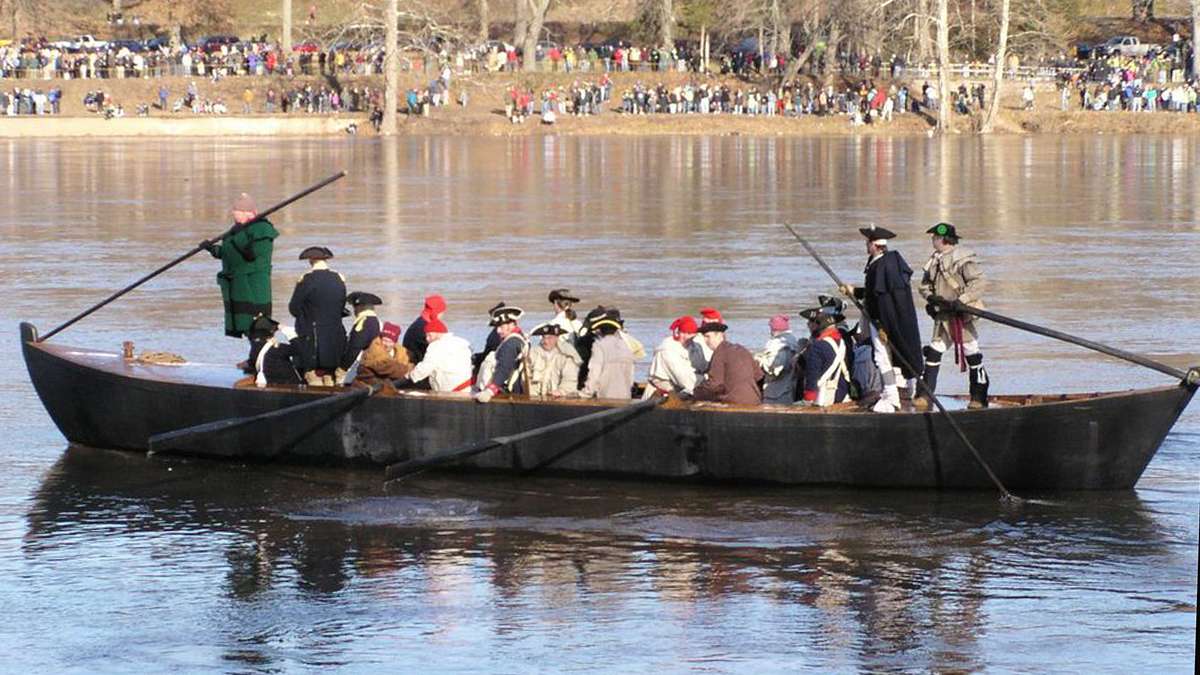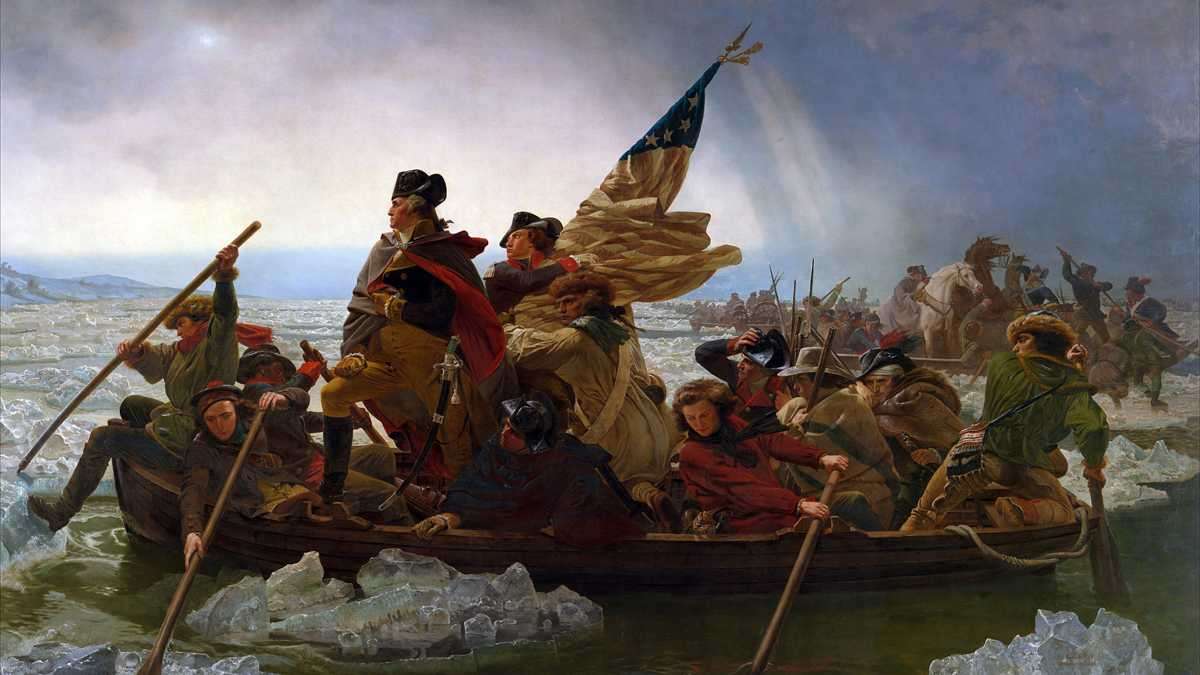Washington Crossing reenactors strive for authenticity
-

-

-

-

-

-

-

-

-

-

-

Reenactors make their way across the Delaware in very deep boats, making it appear that the rowers are sitting. (Photo courtesy of Kathleen Pasko)
-

Nearly every American is familiar with the image of George Washington crossing the Delaware. This iconic image was created for us by Emanuel Leutze, who in 1851 painted General Washington standing on a boat surrounded by icy water. In 1999, the image was recreated on the back of the U.S. Quarter as part of a commemoration series.
The perilous crossing and the ensuing victory in Trenton is considered by historians to be a turning point in the American Revolutionary War. That is why when the historic crossing of the Delaware is staged by reenactors every Christmas, the volunteers take pride to create a realistic portrayal that for some takes on an almost spiritual quality.
Making history come alive
Along the banks of the Delaware River on the Pennsylvania side near Trenton, over 200 volunteers gather every Christmas Day for the annual re-enactment that helps bring to life this historical event. From the riverbank the viewer wouldn’t know that these re-enactors have put years, sometimes decades, worth of research into the event. Each re-enactor provides their own uniform as befits their position, hat, coat, shirt, and pants all carefully crafted in period appropriate material to appear as historically accurate as possible. Some of the re-enactors even take the time to clip short ponytails to the back of their necks. Indeed the only exception to the dress policy is the shoes which, if the re-enactor cannot provide period appropriate, must be disguised by a wrapping of rags.
Beyond the crowds of visitors, three massive Durham Boats sit on the banks of the river waiting to be boarded. Up to 35 people will crowd onto each boat including a boat carrying General Washington and his officers. The boats themselves are an attempt to appear as historically accurate as their passengers these handmade reproductions of their eighteenth century counterparts are approximately forty feet long and three feet deep which gives the appearance that the oarsman are sitting when in reality each man is standing throughout the crossing.
In each boat there are rows of oarsman wielding 16 foot paddles to advance across the river. In one boat, perched above these crewmen and dressed in the same men’s colonial garb, Kathleen Pasko stands as a polesman. While the inclusion of women on the boats is not historically accurate, as long as the women wear the appropriate men’s uniform they are welcome to participate. Ms. Pasko is one of several women who take on the role of colonial soldier or boatmen and she considers this physically demanding position helps her feel closer to local history. “We’re all living historians… most of us do this because we love history.”
C. Samuel Davis, resident of Chesterfield N.J., is actively involved in keeping revolutionary war history alive. Davis frequently portrays General George Washington for students and organizations and is this year’s understudy at Washington Crossing. Davis says he strives to bring historical authenticity when he assumes the role of Washington. Like most participants, Davis has meticulously researches the Revolutionary War. But for him the experience is beyond academic, “When I first rode across the Delaware it was almost spiritual… you feel what they felt, or you think you feel what they felt.”
Ronald Rinaldi III, of Somerset County, N.J., has been involved with the Washington Crossing since the Bicentennial when, as a teenage Continental soldier waiting on the shore in 1977, he was pulled on to the boat by “George Washington,” despite being under the 18 year age requirement to cross. As a 15 year old, Rinaldi probably could never have imagined that in 2007 he would take on the role of Washington and bring his own teenage son aboard with him. Rinaldi has passed on his passion for Revolutionary War history to his two sons, Ronnie and James, who have portrayed runners and drummers, as well as his young daughter Nicole, who portrays a camp follower. Rinaldi still looks back on his decades of experience and hopes he will take up the role again of Washington sometime soon. The role of Washington this year will be portrayed by re-enactor John Godzieba,
A tradition begins
The first modern reenactment dates back to 1953 when St. John Terrell and a group of six friends decided to cross the freezing river in full costume to honor the turning point in history. As the years have passed, the crossing has grown significantly, with thousands of visitors lining the banks each year.
The modern mid-day reenactment has come a long way since the actual crossing 237 years ago. It was the middle of the night, Christmas 1776, when General George Washington crossed the river to attack the Hessians (hired German mercenaries) at the Battle of Trenton. By the morning of Dec 26, Washington had an army of 2400 soldiers, 200 horses and 18 pieces of artillery on the New Jersey side of the Delaware. The army then marched nine miles and defeated the better rested Hessian soldiers camped out in Trenton. Historians say Washington’s success marked a significant victory for the Continental army and a renewed confidence in the Revolution.
Sneak peek of the crossing
A dress rehearsal is planned this weekend for the re-enactors. It will be Sunday, Dec 8 between 11 a.m. and 3 p.m. at the Washington Crossing Park. Along with the crossing, there will be a variety of activities and demonstrations. Admission is set at $ 8 per adult, $ 4 per child 5-11 years old, and children younger than 5 are free.
The Christmas Day crossing begins at 1 p.m. and is free to the public.
WHYY is your source for fact-based, in-depth journalism and information. As a nonprofit organization, we rely on financial support from readers like you. Please give today.




